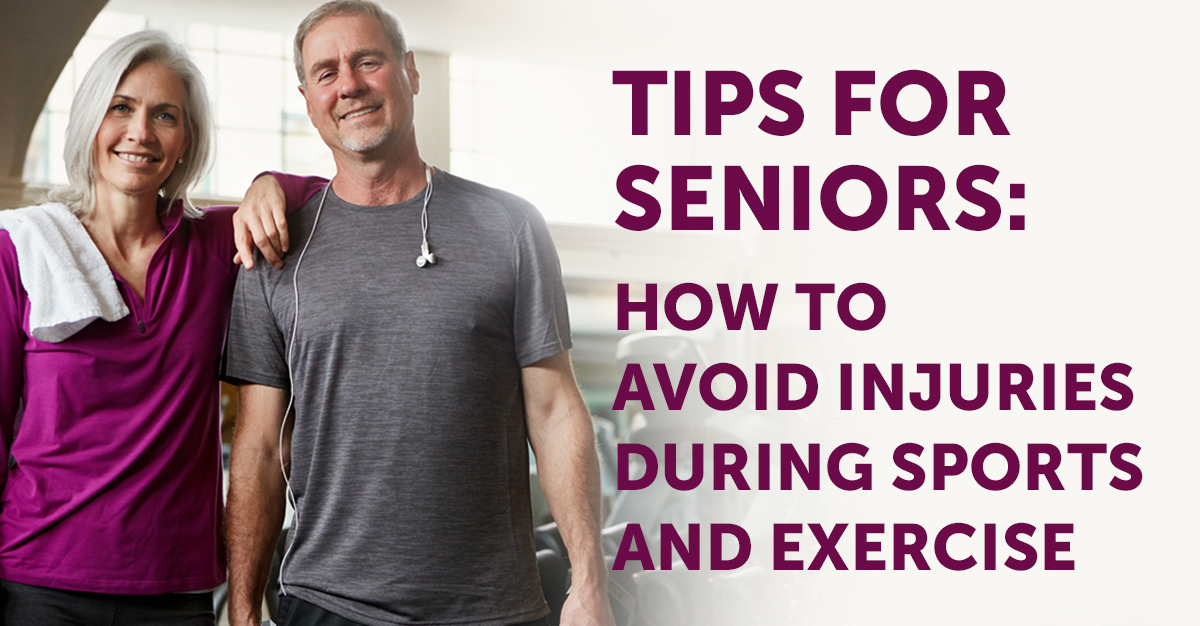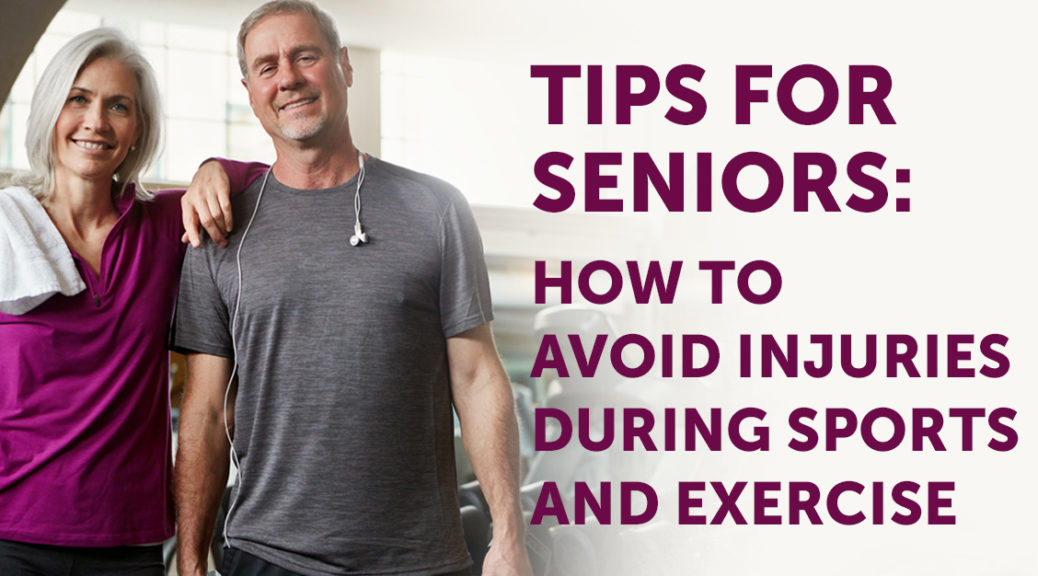
Our bodies change with age. It may not be a pleasant thought, but at least most changes are gradual. One thing that does not change as the body ages is the need for physical activity. Physical activity promotes physical and mental well-being. Before you head out the door, learn why your risk for injury is higher as you get older.
As you age it’s possible to notice a couple of significant changes:
- Tendons and ligaments lose some of their elasticity. This can lead to reduced range of motion in the joints, making these areas more prone to injuries. And unfortunately, older bodies tend to take a bit longer to recover from injuries.
- A loss in muscle. This loss usually begins in the mid-40s (earlier if you are inactive) and may decline as much as 10% after the age of 50. This muscle loss can certainly mean a decline in physical abilities and make it easier to gain weight. Fortunately, regular exercise can significantly slow this muscle loss. If you do not use your muscles regularly, the tissues become weaker and less compliant.
Although older adults accumulate a variety of injuries, the most common injuries involve sprains (stretching or tearing of a ligament) and strains (stretching or tearing of a muscle or tendon) around the shoulders, knees, and ankles. These injuries may only cause minor soreness or stiffness. People often do not recognize soreness as a problem, and they work through the pain. This may lead to more soreness and injury. Other common injuries include tennis elbow, Achilles tendinopathy, and shin splints.
How to Avoid Injuries During Sports and Exercise
To live a longer, more productive life, you have to exercise. You may need to exercise at a lower pace or for shorter periods of time than you did when you were younger. Remember that you may not be able to play hoops to the level of your 30-year-old colleagues, or play as many back-to-back tennis matches as you once could. This is a great time to make some changes to your routine and play smart. Before you get started, follow these tips so you can avoid injuries during sports and exercise:
- Get a basic medical screening. Talk with your doctor. Find out if you have any conditions that would put you in jeopardy while exercising. If you have a chronic condition that is limiting, you may be able to work out an activity plan within the scope of your ability.
- Find a balanced exercise program. Do not rely on one sport to keep you in shape. Follow a program that includes cardiovascular activity, strength training, and stretching.
- Warm up before and cool down after physical activity. Adding a few minutes to your warm up can make your workouts smoother. Cold muscles are more prone to injury, which is why you are asking for trouble if you skip the warm-up. Try some light jogging or walking.
- Keep it regular. You will not make gains in fitness by cramming your activity into the weekend. Aim for 30 minutes of physical activity every day.
- Take lessons. Hire a trained professional such as a physical therapist or licensed athletic trainer to help you attain and maintain proper form in your sport, even if it is weight training.
- Get the right equipment for your sport. You want to make sure the gear you use for your activity is in good shape and used properly. Think about the condition of your shoes, or if you will need a helmet.
- Follow the 10% rule. When you are ready to increase your activity level, do so in 10% increments. In other words, increase activity small increments per week. This rule also applies to working with weights.
- Be cautious about adding new exercises. Whether you are a seasoned fitness enthusiast or new to exercise, avoid taking on too many activities at once. Add activities gradually.
- Listen to your body. Pay attention to the messages your body is sending you. If your knees hurt after you ski, find an easier ski run or maybe think about a different activity that does not hurt your knees.
- Be careful about jumping right back into your routine. Gradually return to your workout routine if you had to take a brief time out because of illness or injury. If an injury requires additional help make sure to follow the return-to-play guidelines provided by your physical therapist.
- Seek professional help if you injure yourself. Consult your physical therapist for injuries that are not relieved with home care. Some injuries require medical treatment and will not go away on their own.
Old age no longer means less activity. In fact, it means quite the opposite. The more active you are the better your body will age. Play smart, listen to your body, and you will find more abilities than limits. For help finding a workout that fits your lifestyle and ability levels don’t hesitate to call your physical therapist. They have the expertise and skills needed to help keep you active and safely avoid injuries during sports and exercise.
RESOURCES:
Office of Disease Prevention and Health Promotion
www.health.gov
Sports Med—American Orthopaedic Society for Sports Medicine
http://www.sportsmed.org
CANADIAN RESOURCES:
Healthy Canadians
http://www.healthycanadians.gc.ca
Public Heath Agency of Canada
http://www.phac-aspc.gc.ca
REFERENCES:
Effects of aging. Ortho Info—American Academy of Orthopaedic Surgeons website. Available at: http://orthoinfo.aaos.org/topic.cfm?topic=A00191. Updated September 2009. Accessed October 26, 2016.
Making physical activity a part of an older adult’s life. Center for Disease Control and Prevention website. Available at: http://www.cdc.gov/physicalactivity/everyone/getactive/olderadults.html. November 9, 2011. Accessed October 26, 2016.
Physical activity guidelines for Americans. United States Department of Health and Human Services website. Available at: http://www.health.gov/PAGuidelines. Accessed October 26, 2016.
Sports injury prevention for baby boomers. Ortho Info—American Academy of Orthopaedic Surgeons website. Available at: http://orthoinfo.aaos.org/topic.cfm?topic=A00178. Updated August 2011. Accessed October 26, 2016.
Last reviewed October 2016 by Michael Woods, MD Last Updated: 12/10/2014

